| |
"It's a minor movie that plays well in our era of Millennial Unreality, and we're glad finally to see this 'lost' work of science fiction. All the top secret paranoid stuff, which has the effect of evaporating politics into broader existential concerns, works because it's in a low key that feels undated. The internalized drama is well balanced by the strangeness of the concept and the mask." |
| |
Michael Barrett, popmatters.com* |
How do you relate to your face? Yes, it's an odd question. I guess it's a subtle variant of "Who are you?" When you look in the mirror, are you aware that you are seeing a 'flopped' right-to-left mirror image and not the image you actually show to the rest of the world? Most of us associate our faces with our identity, hence that body part showing up on ID cards and passports. Who we are and how we relate to our fellow human beings are tied up in those two eyes, nose, mouth and head of hair that the lucky few manage to hold on to. It has always seemed quite extraordinary to me that the average adult face of average size and dimensions contains mostly the same physical aspects and yet there are seven billion of us and most of us could probably tell the difference between the vast percentage that are not twins. How can a man with two eyes, a nose, mouth and hair look so different to a woman with the same attributes or even another man? Star Trek creator Gene Roddenberry once tried to monetise Mr. Spock's fame by making Leonard Nimoy wear a piece of jewellery in a sub-standard third season episode of the original series, Is There No Truth In Beauty? Apparently it encapsulated Vulcan philosophy and was neatly condensed into the acronym IDIC – Infinite Diversity in Infinite Combinations. Well, if not quite infinite, human diversity can be both subtle and gross and if you really want to unnerve people, wear a mask. I went to a masked ball many years ago and was utterly freaked out by human beings I regarded as friends who were no longer recognisable under their choice of concealment. It was singularly unnatural and therefore deliciously exciting. Well, what if a man pitches up with a mask he cannot remove... How does he prove he is who he says he is?
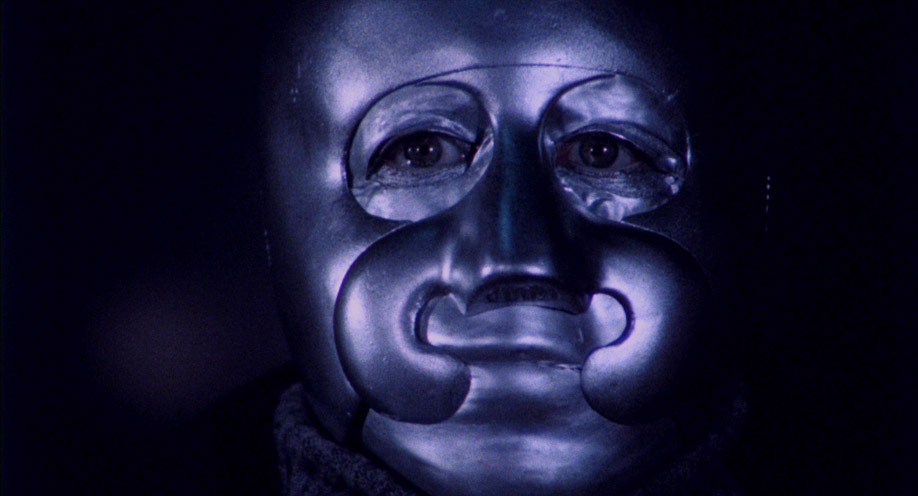
It's the height of American-Russian paranoia in the mid 70s. The book was published in the even more paranoid 50s. Dr. Lucas Martino is a famous US physicist working on a sensitive and important scientific project (the details of which are kept from us, both reader and viewer). He was involved in a serious accident at the Russian border (a car crash in the movie and a lab explosion in the book, the former cheaper to visualise presumably) and the Russians take in the wreck of a human being and rebuild him. But this sets up a quandary for his captors. Do they brainwash him, replace him with a Russian spy or return him? What gives them the liberty of all these choices is that there is nothing left of his physical body that enables him to be identified. His head is a silver ovoid with grills for ears and nasal cavities and only his eyes and mouth appear human coated in a flexible silver metal skin-like substance. He has a right arm with the right fingerprints but that arm might have been grafted on. In the novel there is no functioning human mouth or eyes, just technological replacements but if you need an actor to emote even in a mask as impenetrable as this one, then he has to have something to work with. Dr. Martino is delivered to the Americans and as soon as they clap eyes on him, they know they cannot trust him until something convinces the hardened FBI operative that he's the real deal. But if a man's soul can be mined through enemy interrogation, it can be duplicated. So as Buffy once asked, "Where do we go from here?" Do the Americans trust him to continue his important research running the risk that he may be reporting everything to the enemy or study him in the hope definitive proof will be unearthed?
I remember being very intrigued with the film Who? in my early teens after a TV screening. I wasn't fully able to understand its political subtext so I got hold of the source novel to fill in what I may have missed. There are differences of course as there would be in any novel to film adaptation but on my third or so viewing after a gap of decades I was thrilled to find out that the drama is still potent, the sympathies largely intact and only a few aspects of this intriguing film are worth nit-picking over. We'll get to those shortly. In the novel, Martino (or whoever he is) is much more injured and therefore much more built up. The only part of his lower face that's his own is his tongue. His eyes are cybernetic implants, which relay visual data to the brain and he has grills where his ears and nose should be. But it's completely understandable that the filmmakers downplayed the robotic and brought more of the human out. How could they have cast the role? Of course today, it would be a computer-generated character. The only time this 'more human than robot' trips up the logic of the piece is that in the book he has none of his own teeth (so dental records could not be used to establish identity) but the actor playing the robotic character, Joseph Bova, clearly has his own mouth despite the liberal and exacting application of silver paint. I find it interesting that the design of the Blu-ray cover and home screen shows a metal mask that's halfway between the novel's design and the movie's. Of course, DNA tests would destroy the movie's narrative in an instant but in the 1970s, we weren't there yet.

As I mentioned, there are many differences between the movie and the novel. The most telling is that the narrative time structure is much more advanced and sophisticated in the movie. We cut from Russia to Miami or Germany with never a sense of confusion. The biggest change is that the feared Russian opponent of our American hero is only showcased at the end of the novel despite being talked about in hushed reverence. Played by Trevor Howard, he is intercut throughout the film which makes sense given that we are seemingly on firm ground regarding the masked man's identity, a sureness that slowly fades as we begin to understand what the Russian plan really consists of and the sacrifices made to put than plan in place. Jack Gold opted never to show the man in the mask's face before the accident so paints himself into an artistic corner when it comes to the flashbacks. The camera plays the younger Lucas Martino and while I don't think this device works as well as the director intended (listen to the commentary for a little awkwardness on this subject), it's mostly let down by a voice performance, of Luke as a young man, one which lacks conviction and drive. It's too light a sound for such a serious character and Gold struggles to remember the name of the actor that played that role. The voice of young Martino is not credited in the film.
The Spy Who Loved Me's villain, the great Curt Jurgens, was earmarked for the role of Russian security chief Azarin but for unspecified reasons he was replaced by Trevor Howard with whom Jack Gold had previously worked. Howard was a legend after all and the cast remember him fondly. That is not to say how easy or difficult the actor was to work with given his proclivity for exorcising demons via the bottle. Actress Sarah Miles, bless her, supported Howard in his more difficult moments but an actor in thrall to alcohol was an actor difficult to work with. Please see sound editor Colin Miller's memoirs a little later. Elliot Gould plays Sean Rogers, the primary investigator who comes up with counter-arguments to every one else's, colleagues convinced that Martino is who he says he is. Gould is an attractive performer and is particularly good at being still. You get the sense he's really listening to his fellow cast members and not just waiting to deliver his next line. He smiles just the once in the film and it's all the more powerful for that. Buried under suffocating make-up (that helmet must be spray painted plastic or the actor would have gone insane) is Joseph Bova, an old stage colleague of Gould's. He is quite superb in the role because he manages to humanise the character with very little to emote with. He has a quiet dignity and the air of a man who can accept that, ironically, he isn't the same man as he was even if he was which he may be. Or not. That wasn't the most elegant way of keeping the mystery alive because everything is in doubt until the final surprise.
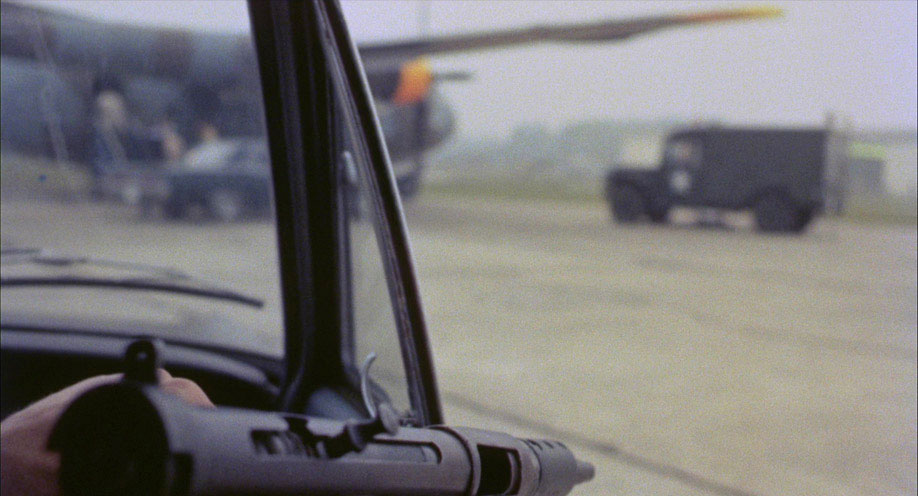
Gold managed to shoot many examples of metallic textures that alluded to the metal-faced antagonist with the helicopter shots with a boat in glistening water being the most obvious. The hand held work is very noticeable with lots of unstable movement, a 'style' that a lot of modern directors seem to want to emulate and not leave in the dust of the celluloid gutter next to the zoom lens. We were just two years away from the Steadicam introduced to Hollywood in Bound For Glory, which didn't make it into the cinemas before Rocky and Marathon Man, both of which made extensive use of the new kit. I suspect Gold would have had a field day with it on Who?. And we are so used to drone footage now, it's also a shock to recall my early days in the cutting room and trying to find the smoothest aerial shot out of rushes that looked like they were shot from the inside of a washing machine. There is a car chase in the film that feels a little like "Oh my God, how do we break up all these dialogue scenes?" feel to it. It's certainly not in the novel. It's well done but Jack Gold reveals his feelings on action scenes very clearly in the interview/commentary. The chase ends in an explosion utilising an old shooting trick of crashing the car, locking the camera off after the pan, letting the car settle, rig it with explosives, blow it up and get the editor to cut the shot so that it explodes as soon as it's crashed. There is clearly no one in the crashed car but hey, we won't hold that against them. A frame-by-frame analysis shows that a green drum in the foreground has to roll away before the editor can cut to the explosion. I can imagine the frustration of not being able to cut earlier giving the audience too much time to examine the car. Another car explodes at the start, which we don't see so I guess there was money only for one explosion. Gold's subtle camera moves break up the risk of tedium in covering conversations and there is an urgency throughout that propels the mystery. If you are a fan of well wrought mysteries with a sprinkle of science fiction, then Who? Is definitely worth your time.
On a personal note, in my capacity of magazine editor for my editing guild, I get to meet and contact many people who worked on films that shaped my childhood and beyond. The acclaimed sound editor Colin Miller, worked on Who?. Oscar winning editor Norman Wanstall, famous in the industry for quitting the business at forty at the top of his game, edited the film on location. First, Colin:
This was my very first location, working in the Bavaria Studios, Munich, in the winter of 1973. I’d known (Oscar winning-sound) editor Norman Wanstall during our working days at Pinewood, but we’d never worked on the same film together up to this point. It was a very interesting film with the great Jack Gold directing. The film was shot in Munich and the States but the post-production was to be in Shepperton as it was a co-production between a German and an English company.
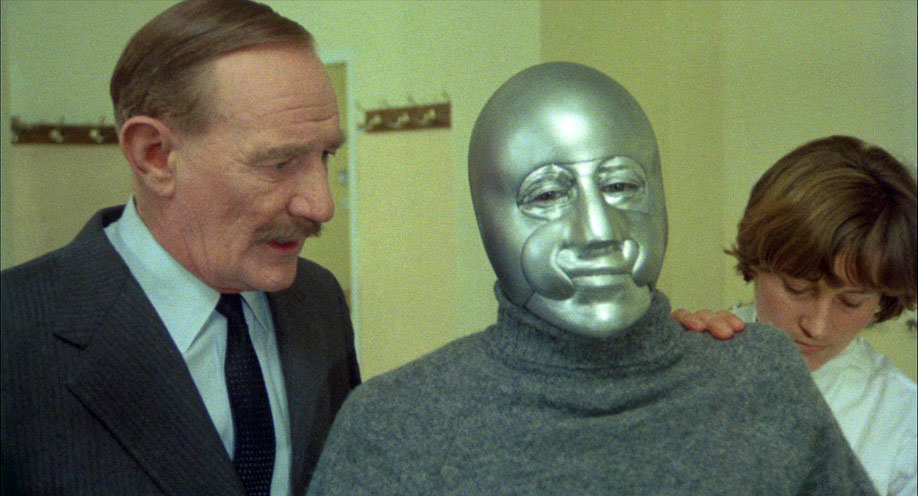
One of the stars in the film was Trevor Howard, playing the part of a Russian General with the appropriate accent. In some of his scenes he was “a little unwell” (drink - here we go again, Richard Burton revisited) so we had to loop him. It was decided we would do that on our return to Shepperton. He was called for a session to start at
2 o’clock. He arrived at the studio at about mid- day and went straight to the bar to ‘kill time’ until the session. On his arrival in the studio it was apparent once again he was, “unwell”. We went through the process and ended up with a much clearer slurred version of the original. Why does it happen to me?
In contrast to this, in one scene with Elliot Gould, the dialogue had a lot of heavy background noise; a wild track was called for and duly recorded. So consistent was Elliot’s performance in terms of timing, that the adjustment that I had to do was absolutely minimal. To this day I’ve never known anyone else like him with this talent for timing.
And from film editor Norman Wanstall...
My main criticism was the fact that the character who was being groomed to replace our lost scientist wasn't the same size and shape. That was bad casting as the whole point of the plot was to make the audience wonder whether the returned man was genuine or not.
One of my fondest memories of the film was bringing our Metal-Head into the recording theatre to replace some of his lines. As the close-fitting mask affected his speech it was essential that he wore part of it during the session, and every time he turned to me for advice or comment I could barely keep a straight face. Staring at him close-up with half his face covered in metal was pretty hilarious and it took all my will power to stay serious and professional.
Who? is presented in the 1.85:1 aspect ratio and has all the pluses and minuses of being shot on early 70s film stock. The German location shooting has muted colours, the drabness emphasized by the vivid colour palette of Miami. The grain is visible if you are looking for it and focus pulling is sometimes an issue with editor Norman Wanstall obviously choosing the best takes even if they were technically less than perfect. I'm specifically thinking of the initial reveal of the metal-masked scientist. Contrast is good throughout.
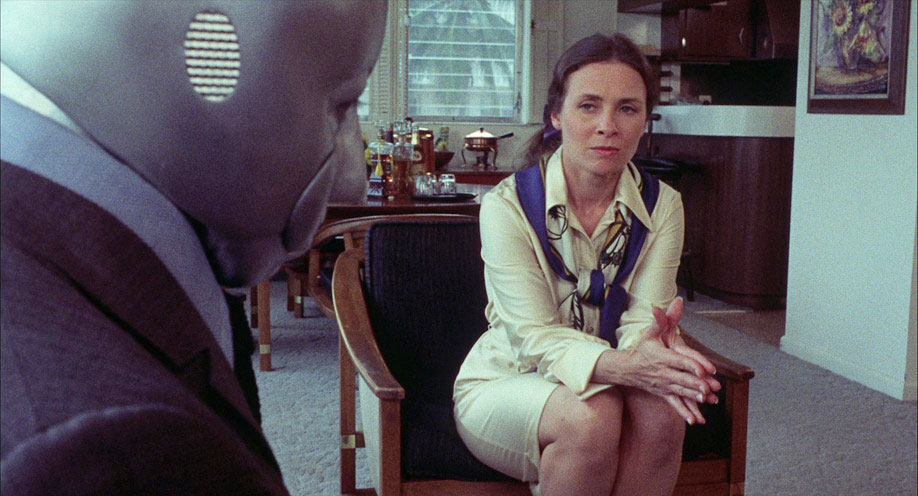
The mono soundtrack is perfectly fine with no problem catching the dialogue. The music score by John Cameron is a prime example of a 70s score (it reminded me of TV action music) and the mixer wasn't afraid to put it front and centre when sparingly used.
Optional English subtitles for the deaf and hearing impaired are available.
Audio commentary with director Jack Gold and film historian Tony Sloman (2010)
Done in the form of an interview between journalist and director, this is a direct guide to the making of the film. Interesting that Gold says that they followed the book's description of the mask (see my earlier comments). Gold's comments on music are spot on and how it's cheapened by overuse and how this patronises the audience. Gold, once a film editor, shares an insight about analogue versus digital namely the only problem you had in a film cutting room was saved by changing a light bulb. Nowadays (or in 2010 when this commentary was recorded) you'd have to get someone in for a day to fix the machines. Sloman asks Gold about the casting of the female characters, as he's underwhelmed by the choices. Gold suggests that famous name actresses may have been a distraction. Gold then puts Sloman on the spot by asking if he thinks the POV shots work (these scenes to me were visually arresting but as I mentioned in the review, the voice performance as Martino by an actor Gold cannot recall and neither is his name listed in the IMdb, is too anaemic). There's a lovely detail explained, something that almost subliminally bothered me. Preceding the mid-movie car chase action is the cast boarding a plane. There is a sailor in a standard blue uniform. What? What's a sailor doing as a guard at an airfield? It turns out it was the German translation of 'Marine' in the script which means sailor in German. I'm surprised the character was used at all given that error but there he is, Jolly Jack Tar, the 'marine'! Gold admits that he finds action sequences tedious or rather shooting them. He says his interest is in working with actors. In fact, in a short scene of a character death, Gold reminds us that the best action scenes are too the point, shocking and don't outstay their welcome. Fair enough. His attitude towards making commercials is hilarious because he's asking the questions most filmmakers ask who've had nothing to do with advertising, namely how do they manage to spend so much money and how long do you budget for an edit of a thirty second ad?
Selected scenes commentary with actor Elliott Gould (2010) (21' 00")
This is a curio. 72 years old at the time, Gould's relatively short commentary is a personal look at a few aspects of the film and regrettably, once you've gone through the main commentary, there are few surprises. It's a much more memory and actor-centric as Gould comments favourably on a fair few of his co-stars. As we leap forward, the main film loses some sync but as it's the commentary we are listening to, it's not distracting. Gould talks about his professional past with the man in the mask, Joe Bova. "She's attractive!" he says at one point upon seeing one of the POV flashbacks, almost like the close up snuck up on him. There's a nice quote from a Maximilian Schell film, The Pedestrian on how the average person allowed the Nazis and their atrocities to flourish: "The closer you are the less you can see."

"Oh, I think there's going to be a car chase!" says Gould reminding me of Kier Dullea doing the commentary duties on the 2001 Bu-ray. He proves he doesn't know the film at all well by saying "Hullo, that looked like a still!" over his characters' descent into the star gate... Sheesh. Gould has quite the throwaway line on the music but he has a point. It does sound like ITV's The Professionals over the action. "Oh oh. Oh no! Oh dear!" he says over the denouement to the action scene reminding us that the stunt driver was not in the car when it, ahem, blew up. He also tells us the scene when his father came to visit the set, which is valid as a memory but it's not exactly what we are dying to know, is it?
The BEHP Interview with Jack Gold (1990): an archival audio recording, made as part of the British Entertainment History Project, featuring the director in conversation with Norman Swallow and Alan Lawson (1 hr 39" 42")
"I used to make false teeth!" That I did not know about Jack Gold. In its own way, his story is the story of TV and film production from the mid-fifties to 2004 and his final TV assignment. I was surprised to find out that he was at the very start of the documentary renaissance, when the weight and impracticality of movie gear suddenly gave way to crystal sync Nagra sound recorders and a liberated, blimped camera with new, much faster stock which meant that you didn't need 'blondes' and red heads' (steady, Woke folk, these were nicknames of lights, not my nomenclature) or any other kind of light. We tend to forget that for the longer period of film and TV production, we needed huge lamps because the stock was slow and required a massive lighting rig. On The Innocents, there's a story that Deborah Kerr once turned up for a scene with sunglasses on. "Is this alright?" Jack Gold asks at one point. I can see why he would ask but he's delivering a history of the industry and it's fascinating. He recalls his dealing with the great Sydney Newman, BBC head of drama and creator of a certain physician and the fact that he encouraged experimentation. Gold's recall is astonishing unless he has his own CV in front of him while he's being interviewed. He takes us through directing from the gallery in a time-ticking TV studio and how that compares directing from the floor. Gold was offered Alien. Jaw drop. And he brushes the project off as like "...another version of Star Trek which it, I suppose, is." Wow. No genre chops on Mr. Gold! There's the lovely endnote on the idea that you have to believe in your work to do it well. A great extra suspiciously edited to almost the exact running time of the movie...
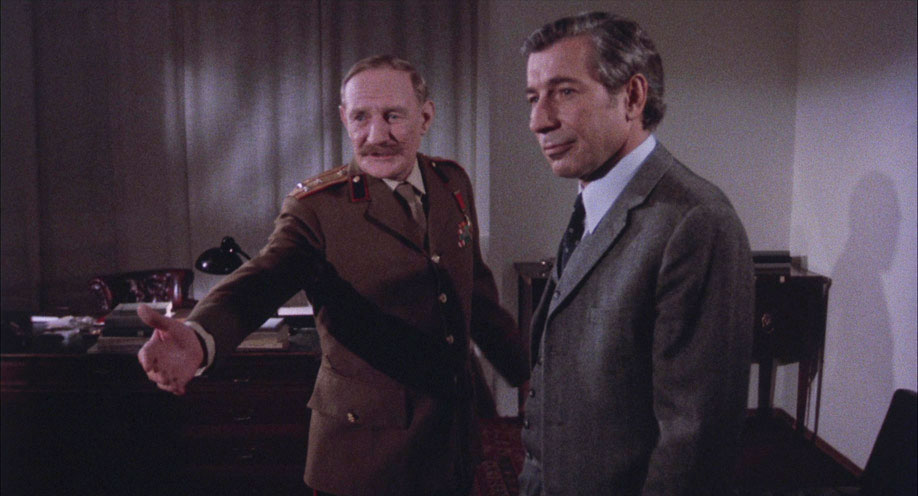
The Megaton Mind (2010): an archival interview with actor Edward Grover (25' 29")
This extra is presented in the 4:3 aspect ratio, which is odd even for 2010 and I have no idea why it is titled 'The Megaton Mind'. I love the fact Grover is so humble. The production was "10,000 years ago" he says which of course means he's feeling his age. His memories tell of the German nightclub in which the crew and cast were able to relax and how the make up man, Colin Arthur won everything in the shooting gallery surprisingly contained in the club. Grover is also a science-fiction buff who regards the efforts on the adaptation to be the best they could be given how difficult the novel would be to make into a movie. I love hearing on Death Wish that Michael Winner's life was priced at $500, the sum offered to any one who would 'take him out'. I am not going to say that it's cheap at twice the price because I have some dignity (!) but it's not hard to understand why Winner was enormously unpopular. I knew one of his assistants and I still shudder at those stories.
We fade to black a number of times and Grover's name comes up again and again after each fade out. Was this extra ever broadcast? A little bit of a niggle; the main horn action theme plays on a loop over the first third of the interview and is quite jarring and then the main theme is under the rest. Like a DVD menu with the same section of score on repeat, it drives you slowly insane. It's not as if the music was needed to hold our interest. Grover is hugely personable and entertaining.
The Man Behind the Mask (2019): writer and critic Kim Newman explores the life and career of acclaimed science-fiction author Algis Budrys (20' 18")
This is a terrific romp through the career and output of novelist Algis Budrys by one of the most knowledgeable genre writers in the business. All hail, Kim Newman. This is a story of the 'almost-rans', those young authors who never managed to compete with the old guard authors whose work was being snapped up by Hollywood. I read the Who? novel again as research for this review but I am still in some awe seeing Newman hold up one Budrys novel after another, novels which are so obviously in his own collection and now presumably out of print. Show off! I'd do the same though...

Image gallery: original posters and book covers
This features seven different book covers and how distinctly varied they are. There are five marketing international posters including the one that adorns the cover of this Blu-ray. Can someone please explain to me who the sexy girl in the red bikini is from one of these posters? There's also a jet fighter that is simply not in the movie. Double You Tea If?
Limited edition exclusive 36-page booklet with a new essay by Phelim O'Neill, an archival interview with director Jack Gold, a look at Algis Budrys' source novel, an overview of contemporary critical responses, and film credits
Another Indicator gem. These booklets do elevate their film releases in a way that few other company's do. O'Neill's article fills a number of gaps of information while being entertaining and playful in itself. The Sight and Sound Jack Gold interview is essentially covered in the interview extra on this disc but is useful and informative. Quotes from the source novel dominate article number three (forgive me but I have just finished reading it). The critical responses are interesting one of which hails from my much loved Cinefantastique magazine.
Who? is an overlooked gem of a science fiction film from a director more famous for his remarkable body of work on TV. It's intelligent, wordy but creatively directed and well acted. The plight of the man in the mask is beautifully conveyed and the tension of the piece is maintained right until the end. I'm also relieved that my early memories were not scuppered by a 2019 viewing. Well recommended.
|